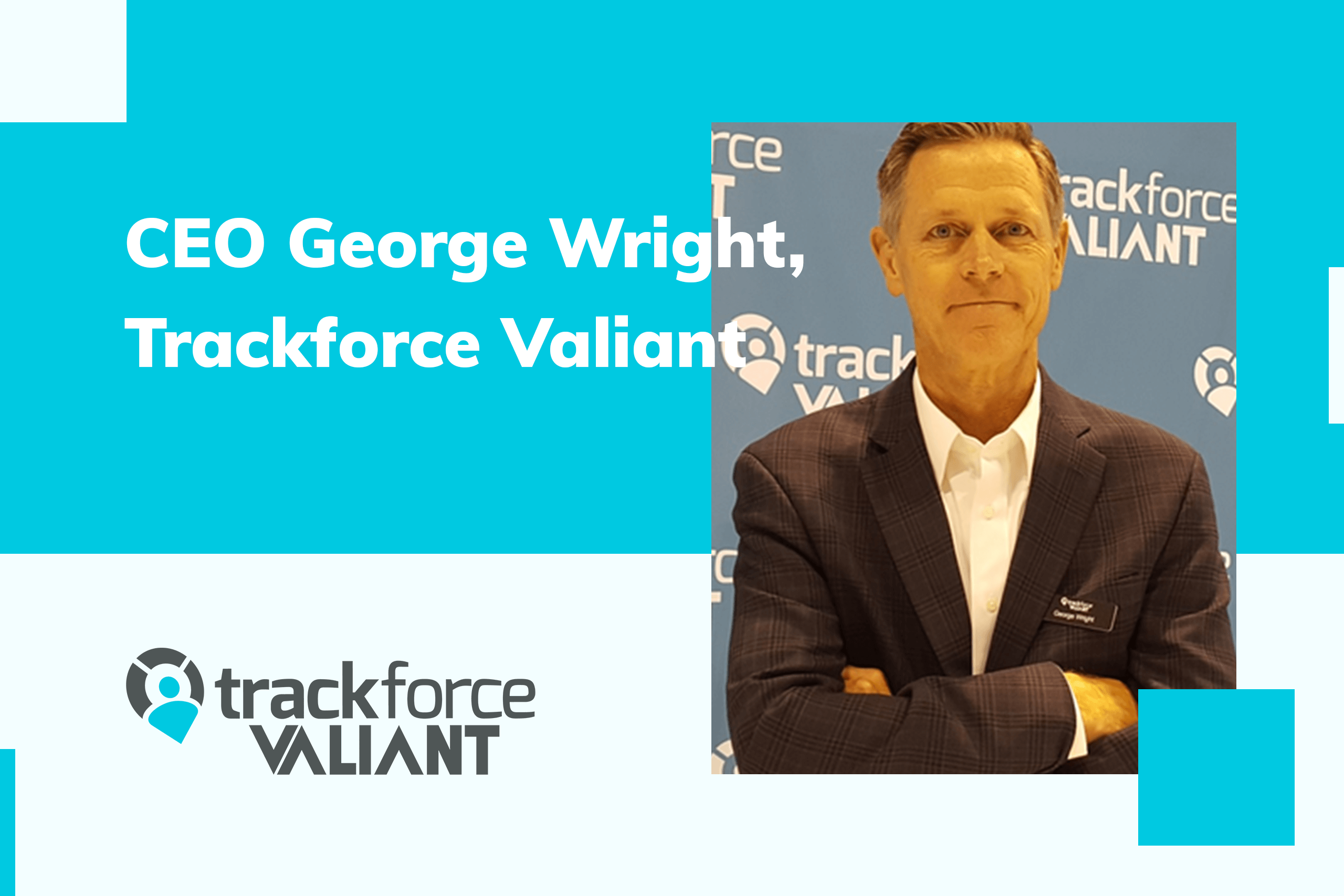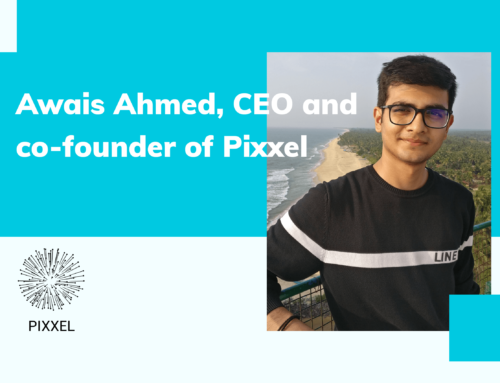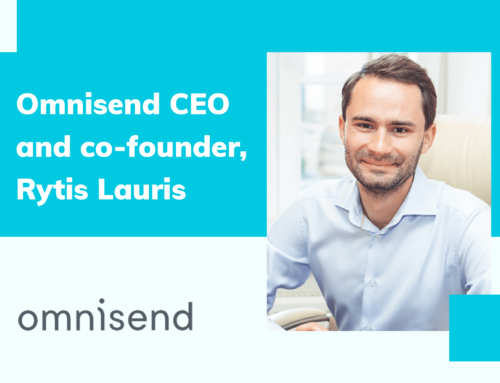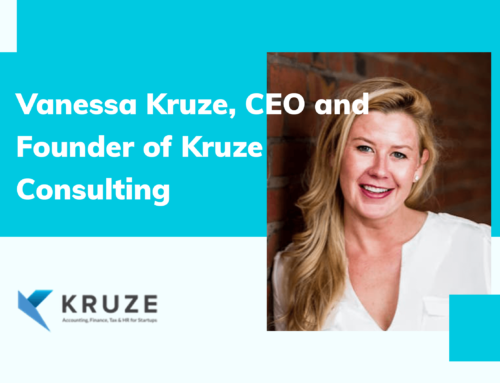STEVE LASKY
Welcome to another installment of Security Infowatch on the floor, we’re here at GSX 2019 in Chicago, and it’s our pleasure today to welcome George Wright, the new CEO for Trackforce Valiant – this new alliance of technology companies that seems to have some very interesting plans and exciting plans for the future of the industry. George, tell us a little bit about the merger of the two, both from a technology and a philosophical approach.
GEORGE WRIGHT
Sure. Yeah, so, when we looked at Trackforce and Valiant, you really think, I think you look at two individual assets where one plus one makes three, right? Trackforce has a robust, what we call front-line application and Valiant has the back-end, right, which we call the business intelligence, and bringing those two pieces together, purpose-built, for security management, is what we’re doing. And I think a couple of exciting things about it, if I could – you always have to throw out a couple of stats, right? So, we’ve got 25 years of experience in the space between us, we’ve got 1800 customers between us, we’ve got 30,000 sites that we support, we’re in 50 countries, we’ve got 300,000 users, and today we process about 8 billion in payroll. Those are the stats for the combined company, which are pretty impressive stats, right?
STEVE LASKY
As far as the security industry as it stands today, what do you bring to the table?
GEORGE WRIGHT
Sure, so right now, if you look at the combination of the companies, Trackforce Valiant is the largest single provider of security workforce management solutions for our space. There’s nobody larger than us which we’re pretty excited about.
STEVE LASKY
Expand on that a little bit.
GEORGE WRIGHT
Sure. So you kind of look at that and you say how or why – we judge it by revenue, right? But literally what we’re doing is we’re going to market with a purpose-built solution for security workforce management. So, bringing together onboarding – onboarding of clients, onboarding of employees, the ability to do the complex scheduling – which, by the way is getting more complex, right? Predictive scheduling. The ability to calculate those hours, right? And then to be able to furnish a guard with a productivity application that helps them do their job, right, posting orders or tracking visitors. Or, I think some of the things we don’t talk about as much is how we make the guard itself, and what they do, safer. With push-button talk, with what we call lone worker applications, so that we’re actually protecting the guard, so the guard is not only more productive, but safer, which is really important to the guard management company, right. And then bringing that back-end piece together, all together with the billing into payroll, and being able to extend the payroll to the guard itself. So, just a robust solution set for security workforce management. And, I think, one of the pieces from a technology stand point, is an open API to be able to interface with other solution sets that are needed, like GL, right, or asset management.
STEVE LASKY
You know, it’s interesting because the impression and the old picture of a guard force management company was an overweight retired police man who was, you know, not really into the technology sector, for one, but, you know, sometimes, not really into his job.
GEORGE WRIGHT
Sure, yeah, yeah.
STEVE LASKY
So, what are really the driving forces in this industry that are really make companies like yours popular and that management is looking, really looking for some accountability when they start hiring and putting together a guard force management team?
GEORGE WRIGHT
Absolutely. So, first off my extended family members in law enforcement will take, yeah, they won’t take that comment negatively about being – some of them are a little overweight and I make fun of them for that – we’ll let that role. Yeah, you know, it is really interesting and we’re talking to one of our customers in here – the Ohio State University – they utilize the Trackforce product on the front-end, very interested in what we’re doing in the back-end with Valiant, but what they said “you’ve transformed the way we do business because you’ve increased productivity in the front-end,” that front-line, not only the vigilance and productivity tools, in terms of either tracking a QR code for a post or being able to post an incident, taking a picture, and uploading it. An they said “there’s some of the old guards, so to speak, they’re still fighting it, they’re still kind of doing their manual things” but he said “on a daily basis, more and more of their guards want to use the automated technology” because they realized one, it’s simple. They’re doing it from a mobile phone, right, two it’s making their life easier versus trying to put pen to paper. And when you look at disruption, you say one word “Uber” and everybody goes “wow, disruption” right? Well, disruption is coming to all industries, and it’s coming to security, and I think, when you look at the first part of it, it’s one, automating, making things easier to use with automation, replacing the pen and paper, right, and we’re doing that together with Trackforce Valiant, the second piece is what are those other disruptive technologies are out there, right? Robotics, right? We’re seeing robots doing some security aspects or policing work. The use of other surveillant devices, right, from a drone to a ring right, and what we’re looking at is how do we start to incorporate that, those solution sets, that technology, into our front-end app, so that the guard could remotely, possibly look at a ring surveillance in a particular part of a neighborhood to judge if something’s going on that’s not good for the neighborhood, right? So, we’re going to push ourselves and I think the great part is with a company like K1 investment management behind us, we have the capital to do that, we’re able to hire the right people and we’re able to invest in other technologies that we think will be part of the disruption and help our customers – the guarding companies, the global fortune 2000, be more productive and keep their facilities and their people safer.
STEVE LASKY
Right. You know, when your making that presentation to the board executives, obviously one of the big factors they’re looking at is, you know, cost of implementing technologies, cost of implementing a manned solution as well. What’s the budget and the money incentive for folks that really haven’t gotten on board with this yet, to really consider this type of solution?
GEORGE WRIGHT
Sure. It’s basically do more with less. I mean, that’s really what it is. If you’re increasing productivity for the guard itself, that means you’re going to be able to cover more areas, right? If you’re increasing productivity in the back-end, it means your individuals are going to be able to do more accurate billing, they’re going to be able to do it quicker, and they’re going to be able to ensure that their payrolls are correctly, right, and then the most important piece here we talked about is the reporting, the analytics, right, that piece to be able to every day go out and ensure that from a guarding company, you’re providing the proper level of service to your end-user customers, and they’re getting a good return on the investment they’re making with you. So, it is more with less. If I’m more productive as a guard, I can cover more terrain. If I’m more productive utilizing other technologies, like a robot, mixed in with that, I, can cover more terrain, right. And if I can make the back-ends simplified, it just allows an organization to be more productive, holistically, with their [IT] investment as well.
STEVE LASKY
You know, obviously everybody “what’s the metrics for the accountability?” You kind of hit on the future, you got other companies that are on the floor here that are either providing robotic guarding services and solutions or other guard companies that have started to integrate those in, so what are, from a high-end technology like that, when we start talking about drones and all the mobile robotic guard monitors, what’s the future look like for you folks?
GEORGE WRIGHT
Well, again, as I said earlier, this is something that we want to incorporate into our solution set and certainly we’re big on partnerships, right, so we’ll carefully monitor who’s out there, who’s doing what, what technologies we can start to build into our solution set. And we’ll figure that out. But, definitely on our, I think if I look at our extended partnership or investment thesis, definitely technologies that we’re looking at.
STEVE LASKY
So, that brings me to my last question, being the CEO I’m sure you’re looking at a three to five year plan, and would you maybe want to share that with us?
GEORGE WRIGHT
You know, I think simplistically, from a “what’s going to happen in the next three to five years,” first off, we want to grow. We want to grow exponentially. And we want to do that through adding value added services and solution sets that our customers and new customers want to use, right. At the end of the day, you need to prove yourself to your customers and be a better company today than we are tomorrow, and that we notice. So, certainly we’d like to see growth in our space, and, you know, as I said earlier, we are, today, now the largest provider of security workforce management solutions in the industry. And we want to continue to grow and build upon that. So, I think there will be organic growth as well as M and A growth as we progress down that three to five year time frame.
STEVE LASKY
Very good. Well, we wish you luck in your endeavors and in future growth of the company. Again, we’d like to thank George Wright, CEO for Trackforce Valiant and I appreciate you spending some time with us.
GEORGE WRIGHT
Great, Steve, it’s my pleasure.
STEVE LASKY
Thank you.
Read from the original source: Trackforce





Posted by
Marta Hi! I'm Marta, project manager for Luminary Chiefs. Here to help, post and make sure everything looks great for you.